AFRINIC service region IPv4 address conundrum
By Adeola Alain P. AINA
10 May 2022
AFRINIC as the regional Internet Registry for AFRICA manages 7.23 /8 of the global IPv4 space, which represents 3.28% of the total IPv4 space managed by the RIRs. Since February 2011, when IANA ran out of /8 and each RIR received its last /8, a countdown started in every region. Some regions did adopt a mechanism of soft landing. One by one RIR exhausted over time their IPv4 pool , except one: AFRINIC
By the end of April, 2022, AFRINIC IPv4 pools show evolution of “Available” and “Reserved” pools as below.
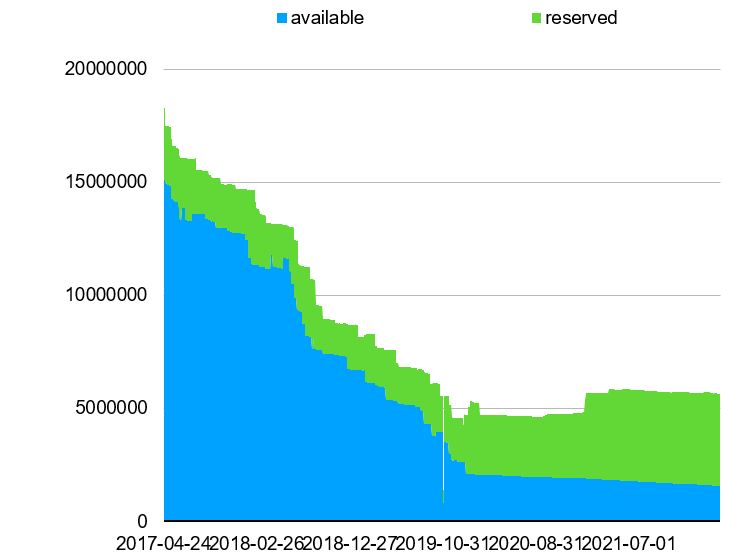
Fig1: AFRINIC IPv4 pools
In January 2020, AFRINIC announced the beginning of the phase 2 of the soft landing. Twenty-seven (27) months later, where do we stand ? Is AFRINIC service region meeting its needs of IPv4 ? Are the predictions proven wrong or right? Is AFRICA lagging behind some "transfer markets"?
The membership continues to grow steadily. 188 new members in 2019, 191 in 2020, 218 in 2021 and already 58 by end of April 2022. In Soft landing phase 1, the maximum size for allocation/assignment was set to /13 and since January 2020 (in the phase 2), the maximum is set to /22. It is important that during these phases, there is no limit of number of allocation/assignment to members. The allocation windows moved to 8 months and additional allocation request must justify usage of 90% of previous allocations.
Noting that AFRINIC has very few v6-only and ASN-only members, IPv4 remains good attraction for both new and old members.
The last /8 ?
The 102/8 which was allocated to AFRINIC on the 3rd February 2011, in execution of the global soft landing policy is managed through a regional soft landing policy as stated above. The ongoing phase2 which started in January 2020 is distributing from a pool of a /11 ( 2,097,152) with a maximum of /22 (1024).
The soft landing policy adopted in 2011, addresses a specific problem. I quoted:
"1- Introduction
Because the Global IPv4 free pool has run out, the IANA has implemented the Global Policy for the Allocation of the Remaining IPv4 Address Space, meaning after the Final /8, RIRs will no longer receive Address space from the IANA as in the past. This puts AFRINIC in a precarious situation as the current allocation and assignment Policy cannot be sustained in the mid to longterm.
2- Summary of How this Proposal Addresses the Problem
In order to ensure a smooth transition to IPv6, AfriNIC's pool should be managed to provide members with address space after the IPv4 pool is depleted. This will help in maintaining IPv4 networks while deploying IPv6 networks - a practice that characterizes the transition period. This document proposes a strategy for allocation and Assignment and maintenance of AfriNIC's IPv4 pool post exhaustion. This policy begins when AfriNIC starts to allocation space from the Final /8"
A quick look at the unique allocation of IPv4 per year reveals a clear increase from year 2020.
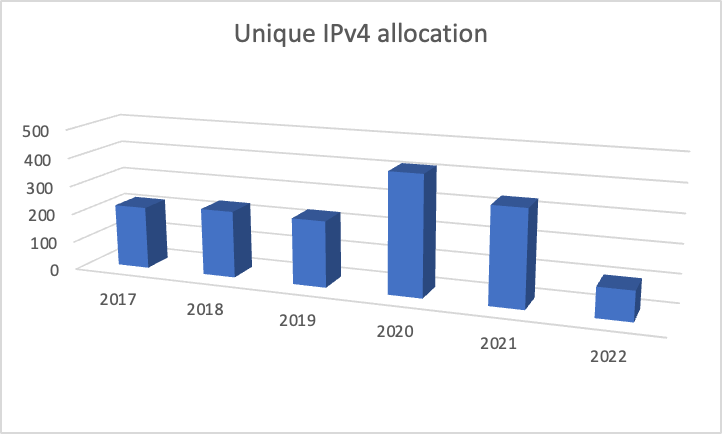
Fig2: Total of unique allocation of IPv4
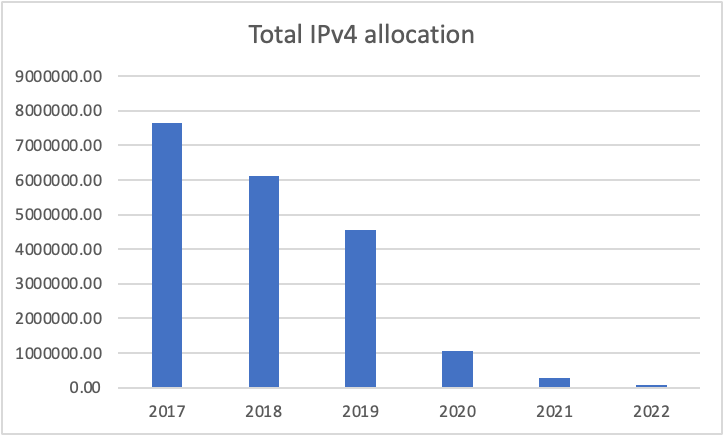
Fig3: Annual total IPv4 distribution
The number of unique allocations increased over the years as expected, but the total number of IPv4 addresses allocated per year remains lower.
IPv4 transfers?
Since 2018, AFRINIC service region implemented an Intra-RIR transfer policy . A quick look at the transfer log showed a total of 68 “Mergers and acquisitions” and 20 “Resources Transfers” which involved 26 IPv6 prefixes, 182 IPv4 prefixes and 46 ASNs.
On the global, the statistics of transfers (excluding Merger &Acquisition) published by the NRO for Q1, 2022 show the numbers below for both Intra-RIR and Inter-RIR
On the overall, there are more intra-RIR transfers with ARIN service region as leader. On the Inter-RIR transfers, ARIN service region recorded the highest outbound transfers. LACNIC, the latest RIR to implement Inter-RIR transfer policy, recorded more outbound Pv4 addresses than in inbound toward the other RIRs.
APNIC and RIPE NCC have more inbound than outbound.
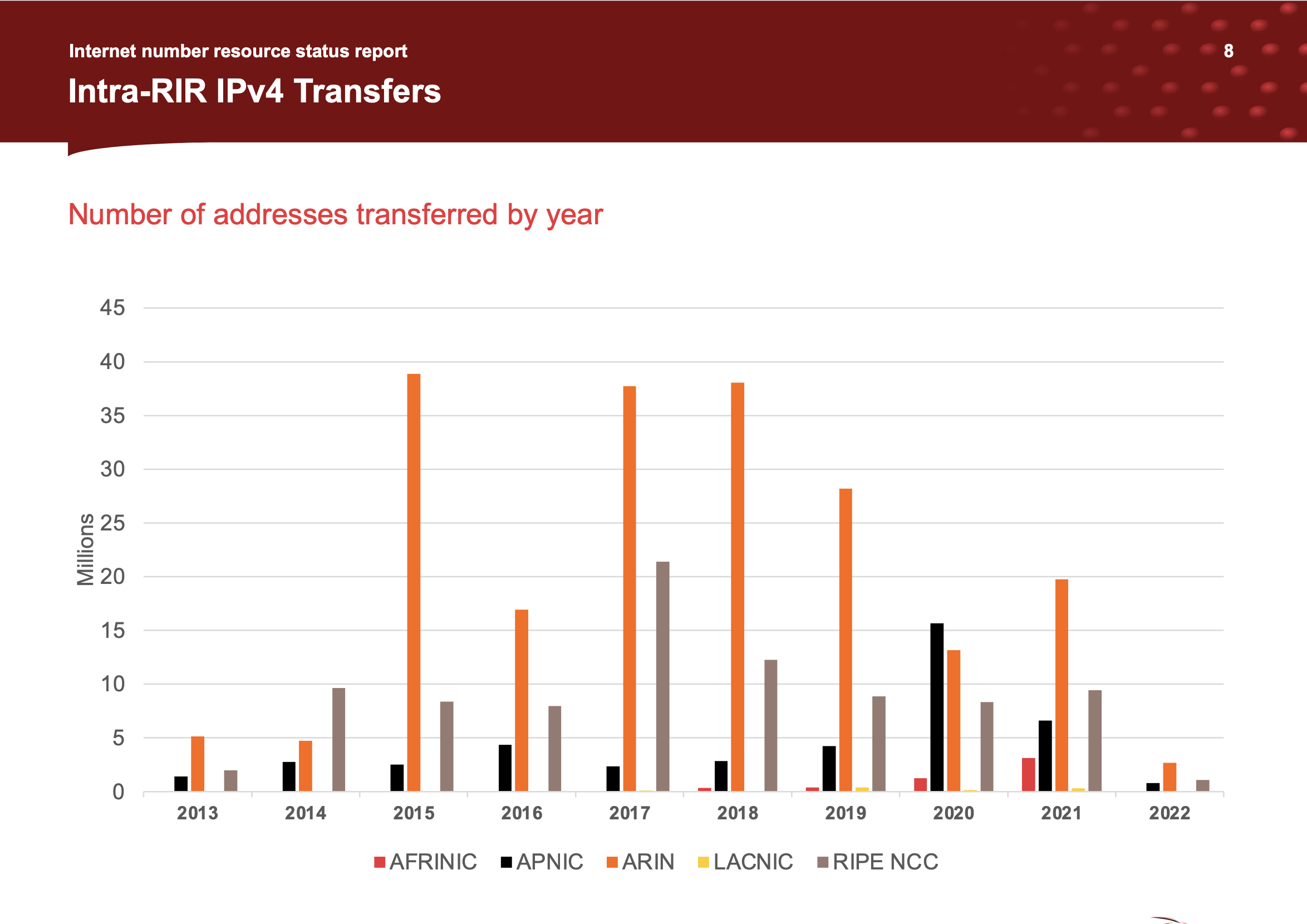
Fig4: IPv4 Intra-RIR transfers per year.
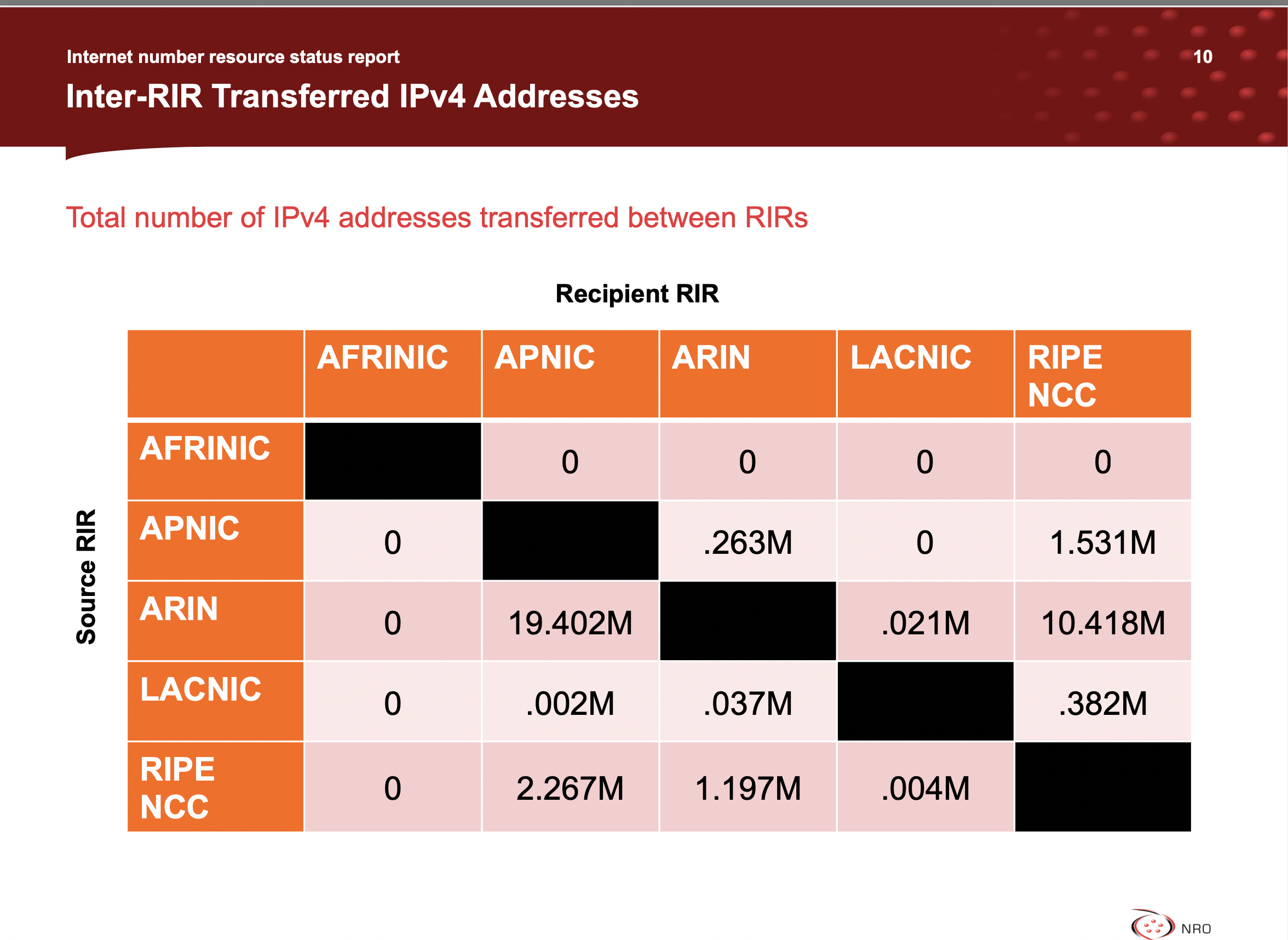
Fig5: IPv4 Inter-RIR transfers.
Despite all being said, AFRINIC service region seems to be doing well in terms of managing the exhaustion of IPv4. The soft landing is leading to a graceful closure of IPv4 pool, allowing new comers and new emerging needs of IPv4 to be covered. The Intra-RIR transfer framework allows resources to move between members in the region, but also enables the activation of some unused and idle addresses.
Based on its current experiences and learning from the experiences of other regions, AFRINIC service region is in good position to evolve its framework prudently to accommodate its real needs while preserving its interest. IPv4 is here to live long, while we continue learning, deploying IPv6 and discussing emerging networks and identifiers.